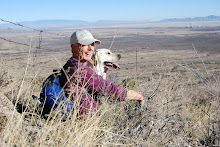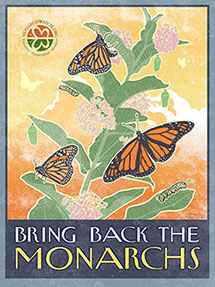The last couple of days, post bike ride, I have been culling fruit. Every year our crop gets bigger (thanks, Phil); last year we had the first apricots and a lot of peaches, some apples and no pears. This year it looks like there will be a ton of peaches, a good crop of apricots and apples, and some pears. We are still enjoying frozen peaches in our smoothies after every bike ride.
It is tough to cull fruit because a laden tree looks great at this point, but there is no way a tree can give enough energy to bring it to size and ripen it all. So, stuff needs to come off. The book says that fruit spacing should be every six inches, at this stage I am going with 4 inches. There may still be a wind storm that blows fruit off the tree or some other weather related event, and the birds will get their fair share no matter what methods I devise. Last year I culled the peaches twice and that worked well, and it provided some small, unripe fruit to the delight of the cotton tails. Note the nibbled bucket when all the fruit was eaten (plastic pieces all over the orchard).
Am I hearing the tree go "ahh" in relief when half its fruit is removed? I think I do, otherwise I may lack the courage to persist. But it is worth doing now to not end up with tiny fruit with a full-size pit.
March 28, 2014
March 23, 2014
A great Sunday morning
For me, all it takes is banana pancakes (or any kind of pancake, really) and watching the live streaming of Milan-San Remo, one of the classic spring bike races.
March 17, 2014
Bat house
One of our friends "in town" mentioned having a bat problem in the summer. The bats, long-nosed nectar feeding bats in this case, were roosting on her porch, leaving behind little reminders and accompanying her into the house from time to time. This resulted in her having to sleep on her couch as she had to leave the bedroom door open for the bats to find their way out of the house.
Dan enjoys small woodworking projects, so I asked him to build a bat house for Mary and we might as well hang one ourselves. Here we see the bats around the hummingbird feeders, though not on the porch, but perhaps we could give them a roost too?
The Bat Conservation Organization provided a free plan for the house, as well as the mesh for the bats to hang from inside the roost, so here is the house.
This morning it was placed on shop/shed. I hope we will have some bat neighbors this summer.
Dan enjoys small woodworking projects, so I asked him to build a bat house for Mary and we might as well hang one ourselves. Here we see the bats around the hummingbird feeders, though not on the porch, but perhaps we could give them a roost too?
The Bat Conservation Organization provided a free plan for the house, as well as the mesh for the bats to hang from inside the roost, so here is the house.
This morning it was placed on shop/shed. I hope we will have some bat neighbors this summer.
New neighbors?
There is an agave less than 10 feet off our east porch that bloomed two years ago. Agaves bloom only once, after about 10 years, and then they die usually leaving some young plants nearby to continue the cycle. The tall bloom stalk and the dead plant blow over in one of our wind storms and life goes on. This plant has indeed died, but it is still upright. I have tried to push it over, but it still seems solid and because the birds like to use it as a perch I decided to leave it alone.
This changed when a ladder-back woodpecker showed up this winter and started to drill a hole in the stalk on the lee side. He worked at it for some days but then abandoned work. A couple of weeks ago he did return and started another, lower, hole. This time it is serious. There are two of them working: male and female. Over the last days they have actually excavated enough to disappear into the hole, turn around, and spit out drill dust that goes flying into the wind.
What if these birds are serious about building a nest in there? What if the stalk blows over with the nest, eggs, hatchlings? This is too much to contemplate, so today we set our early to secure the stalk. I hope that 4 guy wires tied to rebar into the ground will do the job.
The birds were not put off by the modifications. Both of them are working hard at drilling and spitting. I am a bit concerned about the nest being so close to the house and the kitchen window, but they do not seem too worried about us, or about the cactus wrens who are not too pleased but not put off enough to move their nest from the porch. Stay tuned.
March 10, 2014
How I spent my (lovely) Monday morning
Some of you may raise an eyebrow at this, but I had a great time sifting old horse manure for the garden this morning. You know, one could sit in a windowless office, wasting time in someone's staff meeting instead. Dealing with real poop is so much better than the office kind.
It was a gorgeous morning with abundant sunshine, about 70 degrees and not a breath of wind, and a great day to amend the garden soil. Every spring, and in fall for the winter beds, I add one tractor bucket of "organic material" to each garden bed. It gets lightly tilled in with a small rototiller before we install the drip lines and add protection from the animals. Then it is seeding or transplanting time.
It may seem a bit anal to be sifting the stuff, but for each tractor bucket I collect one garden bucket of rock and other debris that was swept up from the horse stalls (horses do not poop rocks). The sifted manure makes the beds light and fluffy over the years. I can't wait to get plants going again.
Peaches! We are going to have peaches! And apricots, and apples, and pears!
March 5, 2014
New and improved
Sooner or later, if you live long enough, you do figure stuff out. I really liked the watering scheme I had in the garden the last couple of years. It allowed for beds to be watered individually and the micro drilled tube hoses, and later the small gauge soaker hoses, did a good job keeping the vegetables happy without wasting water.
Problem was, the valves would freeze in the winter and needed to be replaced on a yearly basis. Turning the main water valve to the garden off and draining the lines did not suffice as even in mildly freezing temperatures the valves would burst.
This year we are adopting a movable scheme with the same benefits as before. Rather than having the main supply buried, this has flexible hose above ground. I can walk on it, push the wheelbarrow across it, whatever. Still the same advantage of being able to water beds individually with small soaker hoses and, come winter I can just pick the whole shebang up, store it, and water the winter garden with a hose attached to the frost-proof faucet. Yahoo!
Problem was, the valves would freeze in the winter and needed to be replaced on a yearly basis. Turning the main water valve to the garden off and draining the lines did not suffice as even in mildly freezing temperatures the valves would burst.
This year we are adopting a movable scheme with the same benefits as before. Rather than having the main supply buried, this has flexible hose above ground. I can walk on it, push the wheelbarrow across it, whatever. Still the same advantage of being able to water beds individually with small soaker hoses and, come winter I can just pick the whole shebang up, store it, and water the winter garden with a hose attached to the frost-proof faucet. Yahoo!
Subscribe to:
Posts (Atom)


















